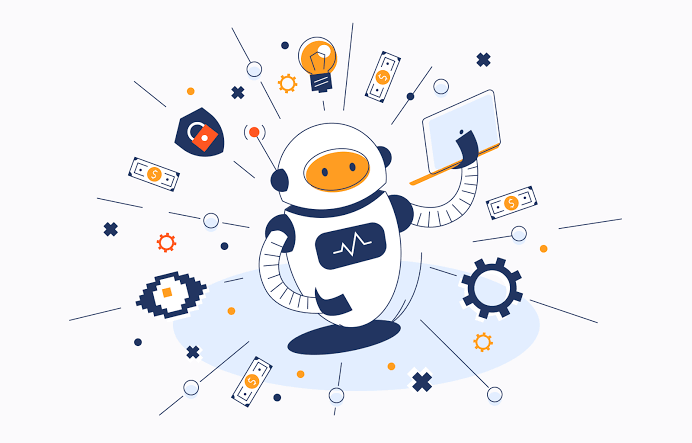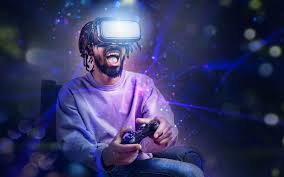In 2025, technology continues to reshape how society functions, interacts, and evolves. One of its most profound impacts is in the realm of accessibility for people with disabilities. Where once there were physical, communication, and social barriers, digital innovation has steadily provided tools and platforms that empower individuals to lead fuller, more independent lives. The journey toward inclusivity has been accelerated by a combination of artificial intelligence, wearable tech, mobile apps, and smart devices designed with diverse abilities in mind.
For millions of people around the world, these advancements are not just conveniences—they are gateways to education, employment, transportation, healthcare, and meaningful social interaction. As technology advances, so too does the potential for a more inclusive and equitable society where ability, not disability, takes center stage.
Assistive Technologies for Communication and Expression
Communication has long been one of the most significant barriers for people with disabilities. For those with hearing, speech, or cognitive impairments, technology now offers various tools that facilitate expression and comprehension.
Speech-generating devices, once bulky and expensive, are now available as apps on smartphones and tablets. These devices allow individuals who cannot speak to type or tap out their thoughts and have them read aloud through synthetic but natural-sounding voices. Popular software like Proloquo2Go and TouchChat continue to evolve with more customizable and intuitive features.
For the deaf and hard of hearing, real-time captioning tools powered by artificial intelligence are increasingly accurate. Services like Google Live Transcribe or Ava provide near-instant transcription during conversations or meetings. Video relay services (VRS) enable sign language users to communicate with hearing people via interpreters through video calls, while newer software is experimenting with real-time AI-based sign language translation.
Augmentative and alternative communication (AAC) tools are becoming more widespread, bridging the gap for individuals with autism, cerebral palsy, or neurological challenges. These tools help users form sentences using pictures, symbols, or text, promoting greater independence and social interaction.
Mobility and Navigation Made Easier
Mobility is another crucial area where technology is transforming accessibility. Innovations in smart navigation help people with visual or physical impairments travel safely and independently. GPS-based applications designed with accessibility in mind provide detailed audio directions, describe nearby landmarks, and even alert users to obstacles or changes in terrain.
Apps like Soundscape and Lazarillo offer rich, spatial awareness experiences by describing surroundings in 3D audio, helping blind users navigate urban areas confidently. Wearable devices such as the WeWalk smart cane integrate sensors and navigation support, detecting above-ground obstacles like signs and low-hanging branches that traditional canes might miss.
For wheelchair users, mapping platforms now include accessible route planning, identifying ramps, elevators, and areas with barrier-free entry. Real-time public transport apps provide data on accessible buses or train cars, enhancing confidence in using public infrastructure.
Additionally, robotic exoskeletons and mobility aids are being tested and refined to help individuals with paralysis or muscular degeneration regain some mobility, offering possibilities for walking short distances or standing upright in therapeutic settings.
Education and Learning Tools for Inclusive Classrooms
Technology has dramatically changed the educational landscape, making it more inclusive for students with disabilities. From primary schools to universities, digital platforms allow personalized learning tailored to a student’s pace, style, and needs.
Text-to-speech software enables students with dyslexia or visual impairments to access textbooks and online content. Tools like Kurzweil 3000 or NaturalReader transform written material into audio, while screen readers like JAWS or NVDA read web pages and documents aloud.
Interactive whiteboards, captioned video content, and adaptive learning platforms ensure students with hearing or cognitive impairments are not left behind. Closed captioning, audio description, and sign language interpretation are now standard on many educational video platforms.
Online learning platforms such as Coursera or Khan Academy have also expanded their accessibility settings. Features include adjustable font sizes, color contrasts, keyboard navigation, and screen reader compatibility—ensuring that learning is not limited by physical or cognitive barriers.
Workplace Accessibility and Employment Opportunities
Technology has opened new doors for employment among people with disabilities by enabling remote work, flexible schedules, and adaptive job tools. In 2025, more companies are integrating inclusive hiring practices and using tech to support diverse workforces.
Accessible software such as voice dictation tools, screen readers, and adaptive keyboards allow users to complete tasks previously out of reach. Employees with visual impairments, for instance, can navigate documents and email through Braille displays or audio feedback.
Virtual workspaces like Microsoft Teams and Zoom have incorporated live captions, keyboard shortcuts, and high-contrast modes. In addition, AI-based productivity assistants help users manage schedules, draft documents, or handle data using voice commands.
Inclusive design is also now a priority in HR platforms and recruitment tools, ensuring that job postings, applications, and interview processes do not exclude individuals with disabilities. With increased awareness and better tools, the employment gap for people with disabilities is beginning to narrow, creating more inclusive economic opportunities.
Smart Homes and Independent Living
Home automation has become a game-changer for people with mobility or sensory impairments. Smart devices controlled by voice, touch, or gestures allow users to perform everyday tasks with ease. From adjusting the thermostat to unlocking doors or turning on lights, smart home tech brings a new level of independence.
Voice-activated assistants like Alexa, Siri, or Google Assistant can perform multiple functions without physical interaction. For someone with limited mobility, this means controlling their environment effortlessly. Smart appliances can be scheduled, monitored, or adjusted remotely, ensuring both convenience and safety.
Security features, including video doorbells and smart locks, offer peace of mind to individuals who may be vulnerable. Automated medication reminders, emergency alert systems, and health monitoring wearables help users manage their well-being with greater control and less dependence.
Inclusive Entertainment and Digital Culture
Entertainment has also become more inclusive through technological advancement. Streaming services now routinely offer closed captions, audio descriptions, and language customization options. Video games increasingly include accessibility modes such as one-handed control layouts, visual cues, or voice commands.
Social media platforms offer text-to-speech, image descriptions, and voice-over navigation so that everyone can engage in online culture. These features help eliminate digital exclusion and allow people with disabilities to participate in mainstream conversations, creative expression, and cultural exchange.
Content creators and developers are now more aware of accessibility guidelines. With feedback from the disability community, tech firms have made strides in creating products that are inclusive by design, rather than as an afterthought.
The Road Ahead: Challenges and Possibilities
While progress is undeniable, gaps still exist. Access to these technologies can be limited by cost, lack of internet infrastructure, or regional availability. Furthermore, not all software or platforms meet international accessibility standards, leaving some users behind.
Ongoing advocacy, education, and policy development are essential to ensure that tech remains inclusive. Governments and developers must work collaboratively with the disability community to test, refine, and scale accessible innovations.
The future holds exciting potential with the emergence of AI companions, brain-computer interfaces, and even neural-based communication devices. As these technologies evolve, the hope is not only to bridge gaps—but to eliminate them altogether.
Conclusion: Empowerment Through Inclusive Innovation
Technology is not merely a tool—it is an equalizer. In 2025, its role in improving accessibility for people with disabilities is both profound and essential. Through adaptive devices, intelligent software, and thoughtful design, technology empowers millions to live, learn, work, and connect without limits.
When inclusivity is built into innovation from the ground up, society becomes richer, more compassionate, and more just. The goal is not simply to accommodate—but to empower, ensuring that every person, regardless of ability, has the opportunity to participate fully in the digital and physical world.



